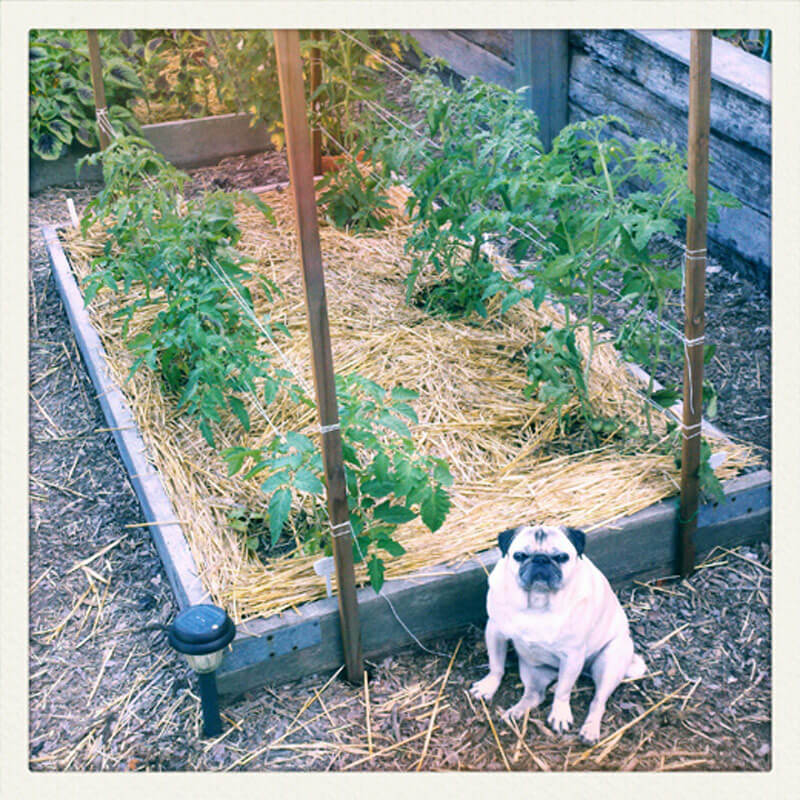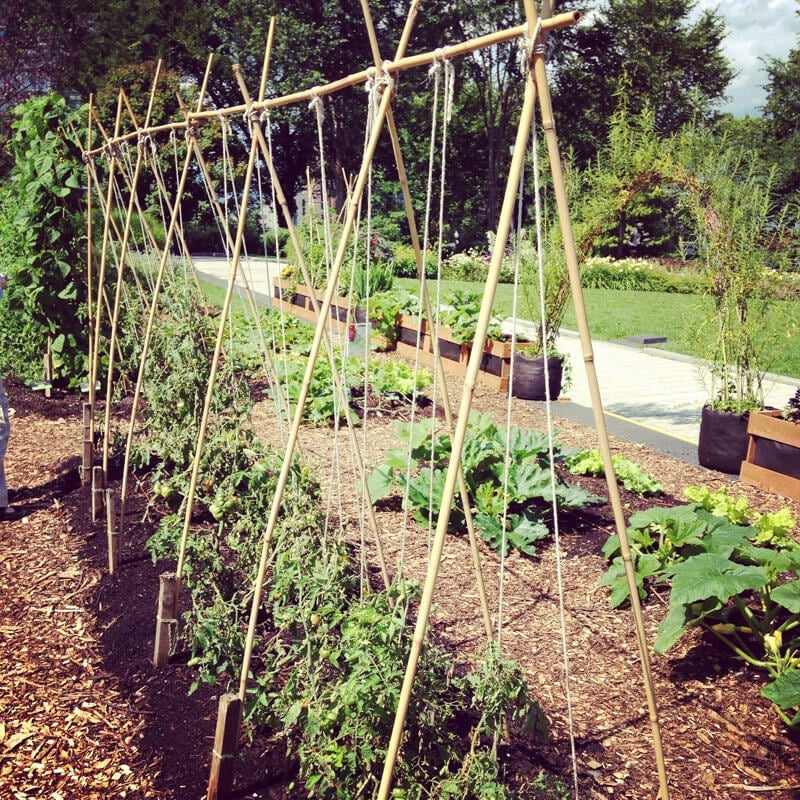
From Quebec, Canada all the way to Honolulu, Hawaii, people have long used the string trellis method to support their tomato plants. It's no wonder, either, because these trellises make post-harvest cleanup a breeze. Just snip the strings and store the stakes in the shed. Easy as tomato pie!
Here are five simple string trellis options to consider this tomato season, ranging from practical to pretty. While they all follow the same basic concept, the trellises vary slightly based on need or location. Check out these tutorials and take your pick—or design your own string trellis and share it with us on Facebook!

1. The Classic String Trellis
Garden blogger Linda Ly, aka Garden Betty, is a fan of the basic Florida Weave string trellis for tomatoes (or other climbing veggies). Simply put, you run weatherproof garden twine between two stakes, weaving it around and back so there's twine on either side of each tomato plant. As the plant grows, you add more twine higher up the stakes. For more details, check out Ly's post on how to create a classic Florida Weave string trellis. Some gardeners claim bragging rights based on the number of strings they use — so a "7-string tomato," for example, would beat out a "4-string tomato." Also called a Cat's Cradle trellis, you can use rebar instead of wood stakes for a longer lasting version.

2. The T-Post String Trellis
Herrick Kimball, the guy behind the Whizbang T-Post Trellis blog, prefers to string his tomato plants vertically, from a top bar attached to two stakes. Using found items such as downed tree limbs, his method is a good one for gardeners who don't want to spend a lot of money on materials. (Visit his post for details about the trellis, and scroll down about halfway.) It's also great for folks who expect to grow tall plants, especially cherry and grape tomato varieties. He also includes a tutorial for making a trellis from concrete reinforcing wire—cheap stuff, but it ends up looking quite pretty with all your tomatoes tied to it. (Just the thing for those hefty Mortgage Lifters.)

3. The Inverted "V" String Trellis
I spotted this simple, elegant string trellis last summer during a visit to Quebec City, Canada. To make it, you simply lash 8-foot bamboo poles together to form upside down "V"s, run a horizontal pole (or poles) along the tops, then attach short wooden stakes on each side to anchor the sections in the ground. Tie long lengths of weatherproof garden twine along the top pole; each one will then be tied loosely around the stem of a tomato plant and wrapped around it for support as it grows. (Plants should be centered between each pair of "V"s.) Cost-cutting tip: Ask around before you buy any bamboo — you may be able to get it for free from someone who has an overabundance growing in his or her yard.

4. The Diagonal String Trellis
For a less mainstream string trellis, we're intrigued by Joshua Feyen‘s clever design. First, a pole is run between two stakes, then cords are run from the pole down to stakes placed in the ground. You plant your favorite tomatoes (or cucumbers or beans) beside the low ends of the cords, then the plants climb diagonally to the tops. Stems can be secured to the cords with gentle clips, garden twine, or zip-ties as they grow. This is an ideal set-up for shorter gardeners who want to grow tall tomatoes. It's also the most unusual string trellis I've come across, and I'm eager to test it for myself! Discover design details this diagonal string trellis here.

5. The Wood Frame String Trellis
This sturdy structure, found on Shaina Olmanson's Food for My Family blog, is also built to train tomato plants to grow diagonally. However, this one is designed as an attachment to a raised bed, so it's not going anywhere anytime soon. It may be more expensive to build than other string trellis options, but could be worth it if you're looking for a more permanent structure, or you want to follow your tomatoes with some climbing peas or cucumbers next season. Click here for more information on how to make this wood frame string trellis. (But first, read our article on rotating vegetable crops to find out why you won't want to use it for your tomatoes again next year.)
By Amanda Davis




 Herbs
Herbs
 Vegetables
Vegetables
 Fruit
Fruit
 Flowers
Flowers
 Succulents
Succulents


